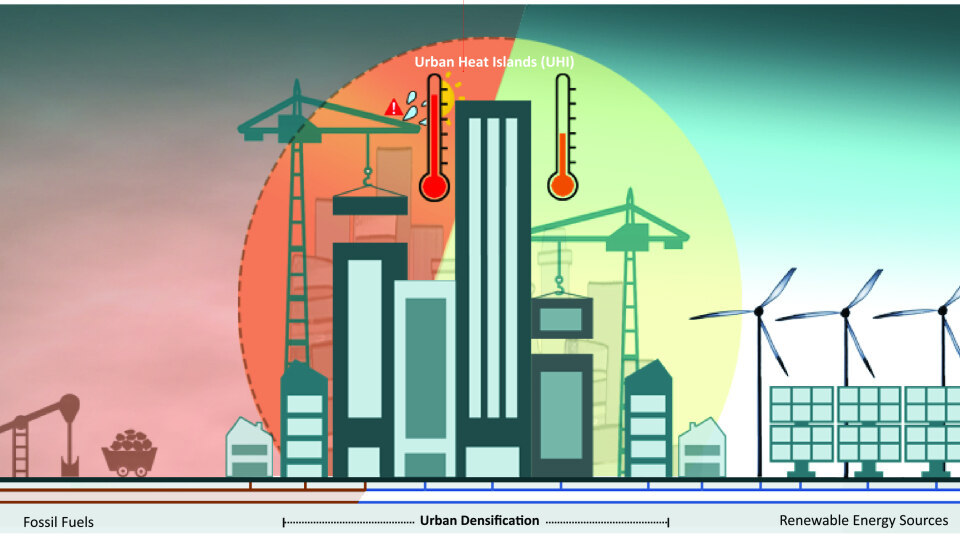Sweden shows how cities will need more resilient electricity networks to cope with extreme weather

Dense urban areas amplify the effects of higher temperatures, due to the phenomenon of heat islands in cities. This makes cities more vulnerable to extreme climate events. Large investments in the electricity network will be necessary to cool us down during heatwaves and keep us warm during cold snaps, according to a new study led by Lund University in Sweden.
“Unless we account for extreme climate events and continued urbanization, the reliability of electricity supply will fall by up to 30%. An additional outlay of 20-60 percent will be required during the energy transition to guarantee that cities can cope with different kinds of climate,” says Vahid Nik, Professor of Building Physics at Lund University.
The study presents a modeling platform that ties together climate, building, and energy system models to facilitate the simulation and evaluation of cities’ energy transition. The aim is to secure the cities’ resilience against future climate changes at the same time as the densification of urban areas is taking place. In particular, researchers have looked closely at extreme weather events (e.g. heatwaves and cold snaps) by producing simulations of urban microclimates.
“Our results show that high-density areas give rise to a phenomenon called urban heat islands, which make cities more vulnerable to the effects of extreme climate events, particularly in southern Europe. For example, the outdoor temperature can rise by 17% while the wind speed falls by 61%. Urban densification – a recommended development strategy to reach the UN’s energy and climate goals – could make the electricity network more vulnerable. This must be taken into consideration when designing urban energy systems, says Kavan Javanroodi, Assistant Professor in Building and Urban Physics.
“The framework we have developed connects future climate models to buildings and energy systems at the city level, taking the urban microclimate into account. For the first time, we are getting to grips with several challenges around the issues of future climate uncertainty and extreme weather situations, focussing in particular on what are known as ‘HILP’ or High Impact Low Probability events”, says Vahid Nik.
There is still a large gap between future climate modeling and building and energy analyses and their links to one another. According to Vahid Nik, the model now being developed makes a great contribution to closing that gap.
“Our results answer questions like ‘How big an effect will extreme weather events have in the future, given the predicted pace of urbanization and several different future climate scenarios?’, ‘How do we take them and the connections between them into account?’ and ‘How does the nature of urban development contribute to exacerbating or mitigating the effects of extreme events at the regional and municipal level?’ “
The results show that the peaks in demand in the energy system increase more than previously thought when extreme microclimates are taken into account, for example with an increase in cooling demand of 68% in Stockholm and 43% in Madrid on the hottest day of the year. Not considering this can lead to incorrect estimates of cities’ energy requirements, which can turn into power shortages and even blackouts.
“There is a marked deviation between the heat and cooling requirements shown in today’s urban climate models, compared to the outcomes of our calculations when urban morphology, the physical design of the city, is more complex. For example, if we fail to take into account the urban climate in Madrid, we could underestimate the need for cooling by around 28%,” says Kavan Javanroodi.
Vahid Nik explains that an increasing number of countries have become interested in extreme weather events, energy issues, and their impact on public health. At the same time, there are no methods of quantifying the effects of climate change and planning for adapting to them, especially when it comes to extreme weather events and climate variations across space and time.
“Our efforts can contribute to making societies more prepared for climate change. Future research should aim to examine the relationship between urban density and climate change in energy forecasts. Furthermore, we ought to develop more innovative methods of increasing energy flexibility and climate resilience in cities, which is a major focus of research for our team at the moment,” says Vahid Nik.

 How to resolve AdBlock issue?
How to resolve AdBlock issue?